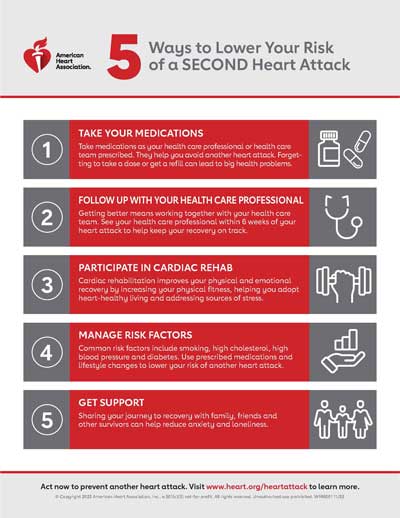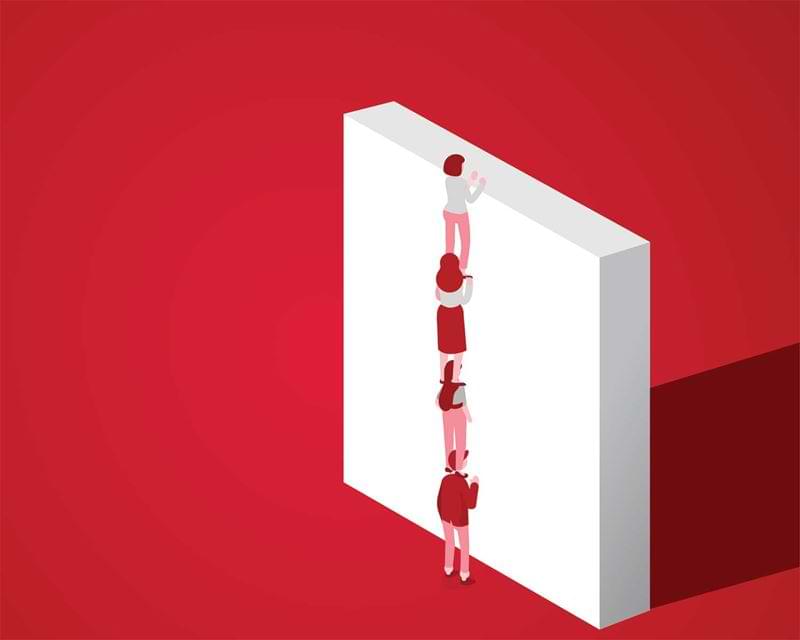Life After a Heart Attack
Explore and embrace your options
You had a heart attack. Now what?
It’s no surprise that many people feel scared, confused and overwhelmed after a heart attack. A heart attack is a life-changing event.
After your treatment, you likely received instructions and a lot of information from your health care team. With time to reflect, you may be trying to understand what happened. You’re sure to want to know what you can do to avoid heart problems in the future.
Navigating the road to recovery can be challenging. Questions, confusion, uncertainty and even fear are common. Get answers to your questions and learn more about what to expect.
5 ways to prevent another heart attack
Make prevention your priority
After a first heart attack, most people go on to live productive lives. But more than a quarter of patients are readmitted to the hospital within 90 days of discharge, a critical window when new problems, including second heart attacks, can arise. Second heart attacks in that 90-day window are linked to nearly a 50% risk of dying over the next five years.
To maintain your health — and avoid another heart attack — follow your treatment plan and focus on a heart-healthy lifestyle.
From Hospitalization to Healthy
When Carolyn, Trip, Ed and Margarita had heart attacks, they felt afraid and unprepared for what might come next. Follow their journeys from the hospital to a healthier life with this video series that focuses on the experience of hospitalization and discharge, managing their risk of a second heart attack, the family and friends who rallied to help during the first 90 days, and the lifestyle changes they made to improve their health.
Here are five things you can do to help prevent another heart attack:
Take your medications as prescribed. Certain medicines can greatly lower your risk of another heart attack. That’s why it’s important for you to understand your medicines and take them correctly. Learn about managing your medications.
Attend your follow-up appointments. Attending your follow-up appointments will help your health care team keep track of your condition and recovery. You can make the most of your time with your health care professionals by preparing for your appointment.
Participate in cardiac rehabilitation. Cardiac rehabilitation is a medically supervised program designed to help you recover after a heart attack. You should have received a referral to cardiac rehab when you were discharged from the hospital. If you didn’t, ask your your primary health care professional or cardiologist about it. Learn more about cardiac rehab.
Get support. It’s normal to feel scared, overwhelmed or confused after a heart attack. Getting support from loved ones or from people who have also experienced a heart attack can help you cope. Connect with other heart attack survivors and caregivers through our Support Network.
Manage your risk factors. After a heart attack, it’s important to manage risk factors (such as high blood pressure, high cholesterol and diabetes) by taking medications, quitting smoking, eating healthy food and getting active. Find out more about managing your risk factors.

Download 5 Ways to Lower Your Risk of a Second Heart Attack (PDF)







